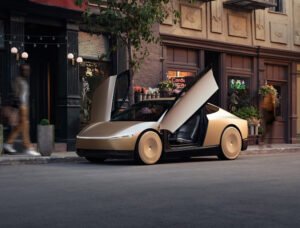
Tesla's Sporty Robotaxi
Tesla’s (TSLA.O) recent reveal of a sporty, two-seater robotaxi, named Cybercab, has left investors and experts puzzled. The design, showcased by CEO Elon Musk at an event near Los Angeles, differs from traditional taxis, which are typically spacious with room for multiple passengers and luggage. Set to enter production in 2026, the Cybercab is expected to cost under $30,000, but Musk provided little detail on how the vehicle would serve everyday needs.
The design, lacking space for families or airport travelers, raised concerns among analysts. Tesla’s stock dropped by 9% following the event. “When you think of a cab, you think of something that can carry more than two people,” remarked Jonathan Elfalan, vehicle testing director at Edmunds.com. Despite the fanfare, Tesla has not yet commented on these concerns.
Experts believe that a successful robotaxi design should prioritize spaciousness, with features like sliding doors and more seating. While Musk also hinted at a futuristic robovan seating up to 20 passengers, no production timeline was given for that model.
Sandeep Rao, a senior researcher at Leverage Shares, noted that the market for two-door robotaxis is limited, as two-door vehicles only account for 2% of U.S. car sales, excluding SUVs and pickups. Tesla faces competition from Waymo and Amazon’s Zoox, both of which offer roomier robotaxi models. Former Waymo CEO John Krafcik criticized Tesla’s two-door design as “more playful than serious,” raising concerns about accessibility for older passengers and those with disabilities.
Musk has claimed that Tesla’s Cybercab will be cheaper to operate than mass transit, projecting a cost of 20 cents per mile. However, he provided little information on mass production or regulatory approvals, both crucial factors in Tesla’s ability to compete with established robotaxi services like Waymo.
While Musk believes the robotaxi market could push Tesla’s valuation to $5 trillion, experts are skeptical about the two-seater’s potential. Sam Fiorani of AutoForecast Solutions stated, “Two-seaters have been proposed for decades as commuter vehicles, but they just haven’t taken off.” Blake Anderson, a senior investment analyst at Carson Group, added, “If Cybercab is meant to be a lower-cost, mass-market model, the two-seat design doesn’t make sense.”






